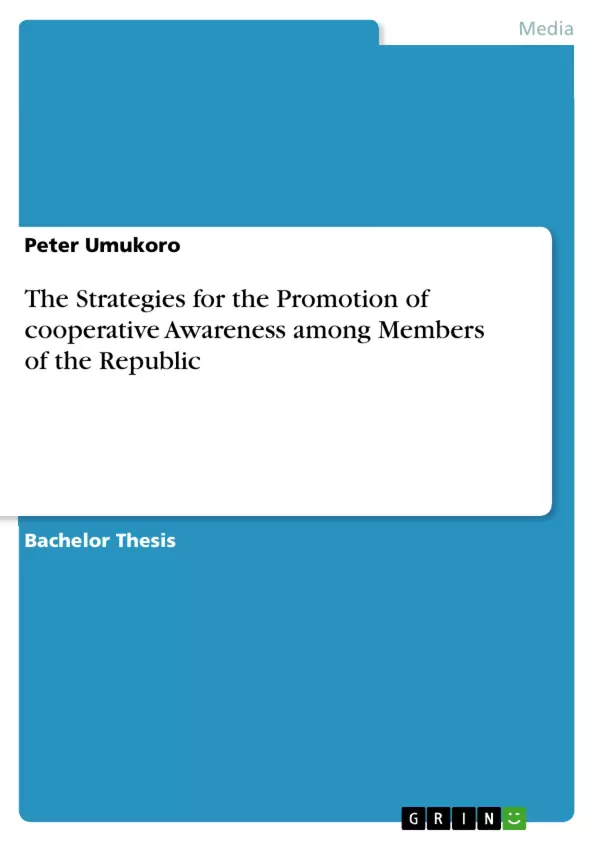There are different views of scholars on the word cooperative. Cooperative is layman’s view means coming and working together. But in scope, Cooperative is wider than coming together of group of people.
(S.Owojuyigbe) Cooperative is an organization of person usually of limited means who have voluntarily come together democratically give solution to their economic and social problems.
(Mr Paul Anawo) Cooperative is an association of person who have voluntarily join together to achieve a common and through the formation of a democratically controlled organization. Making equitable contribution to the capital required and accepting a fair share risk and benefit of the undertaking in which members are actively participate.
On the other hands Cooperative society cannot exist without members, this shows that members determine the existence of any cooperative society and cooperative to set members from nook and crannies of its area of existence there is need to engage in some activities aimed at attracting people into the organization hence the need for strategies for the promotion of cooperative awareness among members of the public.
Cooperative awareness is the process of making cooperative widely known through public notice as result of announcement, advertising or other measures leaflets, films etc intended to attract public notice and due to the fact that cooperative cannot be organized in secret among a few people, within in a family or an exclusive club.
The Cooperative principle of open membership is the free access for every body who want to take part in the society. No one is prevented to be a member. If he\she is of good character in the community. All interested human beings are admitted as a member as much as they are able to use the Cooperative Services should be allowed to become member through a publicity campaign.
Inhaltsverzeichnis (Table of Contents)
- CHAPTER ONE
- INTRODUCTION/ BACKGROUND
- PROBLEM STATEMENT
- PURPOSE OF THE STUDY
- SCOPE OF RESEARCH
- RESEARCH QUESTIONS
- RESEARCH GYPOTHESIS
- SIGNIFICANCE OF THE STUDY
- DEFINITION OF TERMS
- CHAPTER TWO
- INTRODUCTION
- THE NEED FOR COOPERATIVE AWARENESS AMONG MEMBERS OF THE PUBLIC
- MEDIA OF PROPAGATION COOPERATIVE AWARENESS
- ROLES OF PUBLICITY IN PROMOTING COOPERATIVE AWARENESS
- THE NEED FOR TARGETTING COOPERATIVE AWARENESS ON MEMBERS OF THE PUBLIC
- CHAPTER THREE
- INTRODUCTION
- RESEARCH DESIGN
- POPULATION AND SAMPLING TECHNIQUE
- RESEARCH INSTRUMENT
- DATA ANALYSIS
- THE HISTORY OF EGBEDA LOCAL GOVERNMENT AREA, EGBEDA OYO STATE
- LIMITATION OF THE STUDY
- CHAPTER FOUR
- ANALYSIS AND PRESENTATION OF DATA
- CHAPTER FIVE
- SUMMARY, CONCLUSION AND RECOMMENDATION
- SUMMARY
- CONCLUSION
- RECOMMENDATIONS
Zielsetzung und Themenschwerpunkte (Objectives and Key Themes)
This study aims to analyze strategies used to promote cooperative awareness in a specific area, identify the impact of this awareness on cooperative membership, explore the challenges faced by cooperatives in promoting themselves, and propose solutions to these problems.
- The importance of cooperative awareness and its impact on membership.
- Strategies for promoting cooperative awareness among the public.
- Challenges and limitations of promoting cooperatives in the study area.
- The role of media and publicity in fostering cooperative awareness.
- The significance of targeting cooperative awareness efforts to specific segments of the public.
Zusammenfassung der Kapitel (Chapter Summaries)
Chapter One introduces the concept of cooperatives and their importance in promoting economic and social well-being. It delves into the need for raising awareness about cooperatives, emphasizing their impact on individual lives and community development. The chapter further outlines the study's objectives, scope, and methodology.
Chapter Two explores the theoretical framework underpinning cooperative awareness, discussing the various media and strategies employed in promoting cooperative participation. It highlights the crucial role of public awareness campaigns and the need for targeted outreach to diverse segments of the population.
Chapter Three focuses on the research methodology, detailing the design, population, sampling technique, and data analysis methods used to investigate the study's objectives.
Chapter Four presents a comprehensive analysis and interpretation of the collected data, shedding light on the effectiveness of various promotional strategies and their impact on cooperative membership.
Schlüsselwörter (Keywords)
Cooperative awareness, promotion strategies, media, publicity, membership, impact, challenges, limitations, public participation, economic development, social well-being.
- Citar trabajo
- Peter Umukoro (Autor), 2013, The Strategies for the Promotion of cooperative Awareness among Members of the Republic, Múnich, GRIN Verlag, https://www.grin.com/document/231194



